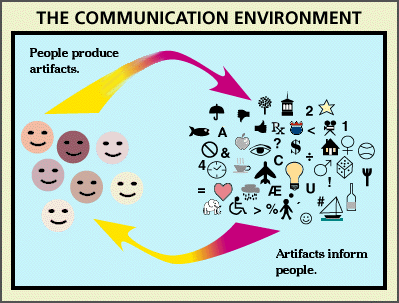
We “understand” before we experience because we predict or apply our mental template to what we think is coming.Įxpectations affect our perceptions. We draw from our experiences to help guide us to our goal, even when the situations may be completely different. calls preunderstanding, a set of expectations and assumptions from previous experience that we apply to a new problem or situation. This discussion illustrates what the German philosopher Jürgen Habermas Habermas, J. You need to read the maps as closely as possibly in order to be able to communicate from common ground. Your audience has a mental road map that includes values, experiences, beliefs, strategies to deal with challenges, even scripts for behavioral expectations. The mental state where you could not see it, or perceive it, is gone. It’ll be hard because now that you know where it is, you have a mental road map that leads you to the solution. Look at the puzzle again and see if you can avoid seeing the solution.

These differences in perspective influence communication and your ability to recognize not only your point of view but theirs will help you become “other-oriented” and improve communication. The degree to which you can tailor your message to their needs will be associated with an increase in the overall effectiveness of your message. When speaking or writing, your style, tone, and word choice all influence the reader. Even though your sales message might focus on a product like a car, or a service like car washing, preconceived ideas about both will need to be addressed.įor example, how many advertisements have you seen on television that have a song from specific time period, like the 1980s, or perhaps the 1960s? The music is a clear example of targeting a specific audience with something distinctive, like a familiar song. In terms of words to use to communicate ideas, references to music or movies, even expectations for behaviors when dating, their mental “road map” may be quite different from yours. Imagine that you are doing a sales presentation to a group where the average age is much older or younger than you. You may find it hard to drive on the other side of the road while visiting England, but for people in the United Kingdom, it is normal and natural. Neither is right or wrong, simply different. If you read and write Arabic or Hebrew, you will proceed from right to left. Why not the bottom right corner, or the top right one? In English we read left to right, from the top of the page to the bottom. Where did you start reading on this page? The top left corner. While there are many ways to solve this puzzle, there is only one right answer. The story in thisĬhapter helps me understand my friends that have ADD or ADHD.If you deciphered the hidden message, how did you do it? You may have tried looking for words that were diagonal or backwards, using skills you learned solving similar puzzles in the past. Times I would not understand why they didn’t see it my way. This helps me to see things from another person’s point of view when often I now understand why each person thinks about things differently. When we generalize, nothing is hurt however when we overgeneralize we are stereotyping. When we organize these things into groups, we generalize that they are all the same when they are in the same file. This pertains to the process of perception because we select things that are similar to what we already know or things that we have seen before. Jenna Marbles has many videos pertaining to stereotypical thoughts. An example is what girls do in the morning while they are getting ready for the day in the bathroom. Stereotyping is making judgments and assumptions against members of groups in which they fit. Stereotyping is a part of the organization process. In this video by Jenna Marbles, it is evident that it is stereotypical of boys.


Perception is different for every person. Each personĬan interpret the same stimulus in different ways as well as organize themĭifferently. Influence on each other when they try to reach a shared perception. Is a big part of sense-making that occurs between and among people that have an When we interpret things in a way that makes sense to us in some sort of way. This is also the step in which stereotyping is categorized. This is the point in the process when we decide where each In our brains, we have ‘files’ where we store things that we Is defined as the step when we arrange the information that we have selected inĪ meaningful way. Other stimuli and focus on the ones that stand out most to us. This is the part of perception where we block most The perception process consists of four steps: selection, organization, In this chapter, I learned the most about the perception process.


 0 kommentar(er)
0 kommentar(er)
